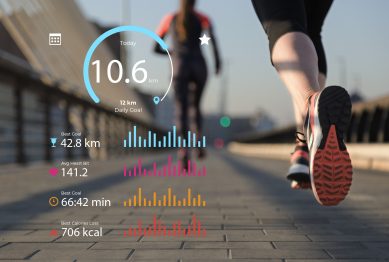In 2025, fitness is less about extreme workouts and more about routines that are sustainable, practical, and effective. Among the emerging trends shaping the wellness space are full-body and walking routines for overall health. These approaches aren’t flashy—they’re simple, consistent, and backed by science. That’s exactly why they’re gaining momentum.
From professionals juggling busy schedules to older adults aiming to maintain mobility, these routines adapt to nearly every lifestyle. Instead of requiring expensive gym memberships or hours of daily dedication, they deliver powerful benefits in shorter, structured formats.
The focus on full-body and walking routines for overall health reflects a larger cultural shift: moving away from quick fixes and toward sustainable fitness practices that integrate seamlessly into daily life.

Why Full-Body and Walking Routines Work Together
Blending full-body workouts with structured walking plans provides a foundation for holistic health:
- Muscle strength & endurance: Full-body training challenges multiple muscle groups simultaneously, building balanced strength that translates into everyday function.
- Cardiovascular health: Walking, especially when structured, improves heart efficiency, circulation, and metabolic health.
- Mobility & longevity: Functional exercises like squats and lunges preserve balance, coordination, and resilience with age.
- Accessibility: Walking requires no equipment. Full-body routines can be done with bodyweight or minimal tools, making them adaptable anywhere.
- Habit building: The structure of something like the “6-6-6 walking routine” (60 minutes, six days per week, with six minutes of warm-up and cool-down) helps individuals stay accountable.
Together, these practices create a routine that addresses strength, stamina, and lifestyle integration.
Trend #1: The Rise of Full-Body Workouts
Full-body workouts are experiencing a resurgence as more people look for efficient ways to stay fit. Unlike traditional split routines, which focus on one or two muscle groups per session, full-body training hits every major muscle group in one workout.
Benefits include:
- Efficiency: One session builds strength across the body, perfect for people with limited time.
- Metabolic boost: Engaging multiple muscle groups burns more calories and elevates metabolism.
- Balanced development: Reduces the risk of overtraining some muscles while neglecting others.
- Improved recovery: With two to three sessions per week, there’s ample recovery time between workouts.
Popular formats include circuit training, kettlebell flows, suspension training, and dumbbell-based compound exercises. Professionals working long hours find these especially effective because they maximize results in short timeframes.
Trend #2: Walking Becomes Structured With the 6-6-6 Routine
Walking has always been a reliable fitness staple, but in 2025 it’s getting a structured twist. The 6-6-6 walking routine has become a social media trend for its simplicity and results:
- 60 minutes of walking
- Six days a week
- Six minutes of warm-up and cool-down
This isn’t about reinventing walking—it’s about framing it as a consistent, measurable, and achievable practice.
Health experts highlight how this approach:
- Encourages routine formation.
- Provides enough weekly cardio to meet public health guidelines.
- Is adaptable for all fitness levels.
For busy professionals, splitting the 60 minutes into two 30-minute sessions works equally well. It makes walking flexible while maintaining its benefits.
Trend #3: Longevity Training Moves Mainstream
Longevity is more than a buzzword—it’s a global priority. Fitness experts emphasize that exercises mimicking daily movement patterns are critical for long-term health. These “functional longevity exercises” include:
- Squats: Preserve mobility in hips and knees.
- Lunges: Improve balance and reduce fall risk.
- Glute bridges: Strengthen posterior chains, reducing back pain.
- Farmer’s carries: Support grip strength, posture, and core stability.
These movements don’t just build strength—they support independence, confidence, and resilience as people age. When paired with walking, they create a routine that extends not only years to life but life to years.
How to Build a Full-Body and Walking Routine for Overall Health
A practical framework combines efficiency, structure, and flexibility. Here’s a guide to implementing both full-body and walking routines for overall health.
1. Start With Two to Three Full-Body Sessions per Week
Each session should include compound movements:
- Squats or lunges
- Push-ups or dumbbell presses
- Rows or pull-ups
- Core work (planks, leg raises)
- Loaded carries or deadlifts
Aim for 30–45 minutes. Progress gradually by increasing weights, reps, or intensity.
2. Layer In the 6-6-6 Walking Routine
Make walking a cornerstone of your daily schedule. Options include:
- Morning walks to set energy for the day.
- Evening walks to de-stress.
- Split sessions if time is short.
Walking outdoors also brings mental benefits—reduced stress, improved focus, and mood regulation.
3. Add Short Functional Longevity Micro-Sessions
Even on non-training days, commit to quick 5–10 minute routines. Example:
- 10 bodyweight squats
- 10 lunges per leg
- 20-second planks
- 30-second single-leg balance holds
Small actions compound over time, reinforcing mobility and resilience.
4. Track Consistency Over Perfection
Use a fitness tracker, smartwatch, or simple notebook. Metrics to follow:
- Weekly step count
- Resting heart rate trends
- Strength improvements (e.g., heavier weights, more reps)
- Mood and energy levels
Consistency matters more than flawless execution.
5. Don’t Overlook Recovery
Both strength and walking routines place demands on the body. Prioritize:
- Stretching or yoga sessions for mobility.
- Adequate sleep for recovery and repair.
- Proper nutrition to fuel energy and growth.
Why This Approach Resonates in 2025
Fitness culture is shifting. Instead of promoting extremes—ultra-marathons, heavy bodybuilding, or trendy equipment—the focus is returning to simplicity and sustainability. The global workforce is busier, yet more health-conscious, seeking practical strategies to integrate movement into everyday routines.
Full-body and walking routines for overall health address these needs directly:
- They require minimal space and equipment.
- They work for people of all ages.
- They blend strength, endurance, and mobility.
- They are sustainable over months and years.
In short, they fit real life.
Final Thoughts
The fitness industry in 2025 is embracing approaches that are as practical as they are powerful. Full-body and walking routines for overall health strike the balance between accessibility, effectiveness, and longevity. These aren’t short-term fixes—they’re lifetime investments.
A 30-minute full-body workout a few times a week, combined with structured walking and functional daily movements, creates a well-rounded plan for lasting strength, energy, and vitality.
The future of fitness is not about doing more—it’s about doing what matters. And these routines are proving to be the foundation of a healthier tomorrow.
References
- Why the 6‑6‑6 walking routine is going viral and how it supports weight loss and mental health, https://timesofindia.indiatimes.com
- Why the Full-Body Workout Reigns Supreme, https://www.gq.com
- Short on time but keen to get strong? These are the best 15-minute, https://www.marieclaire.co









